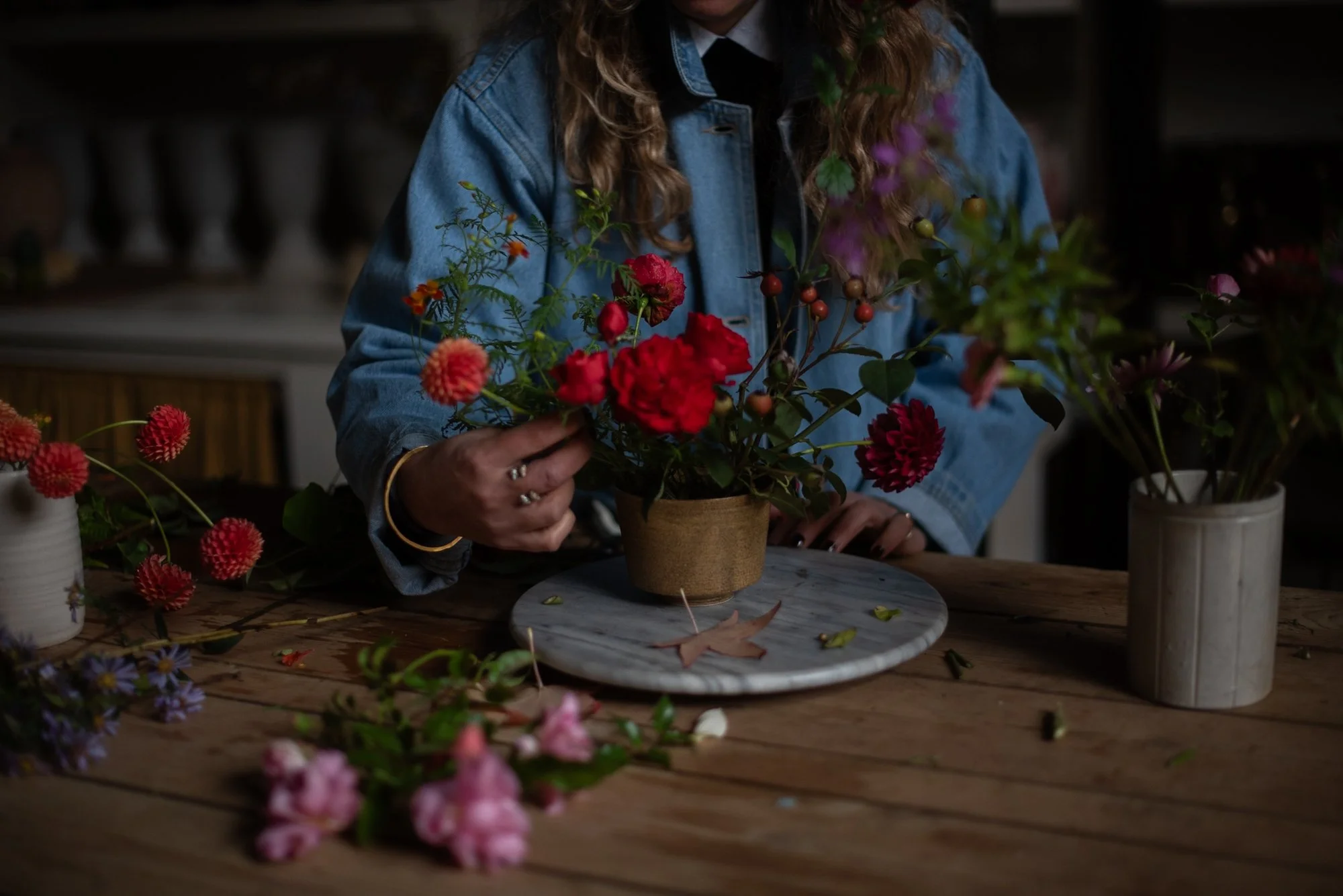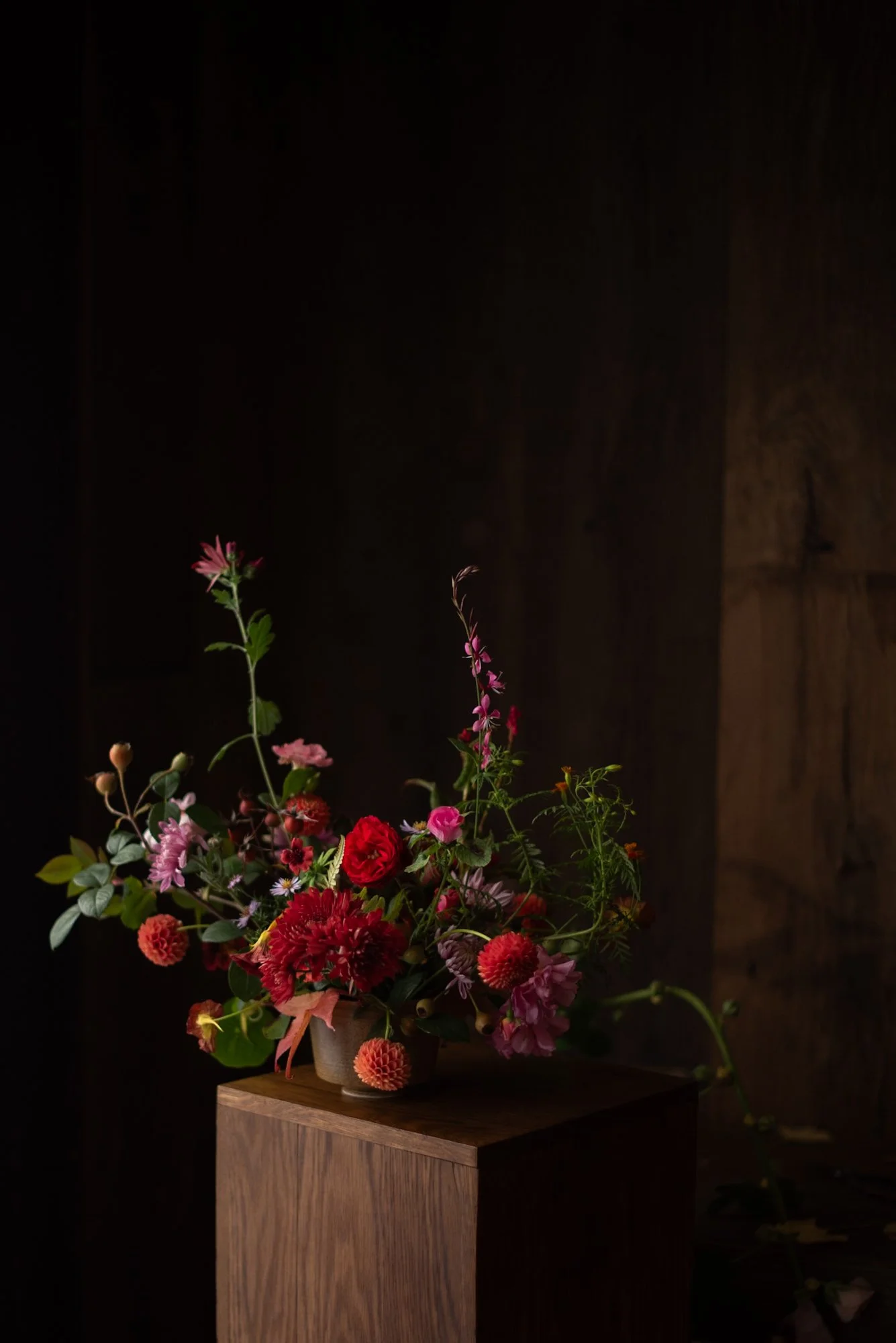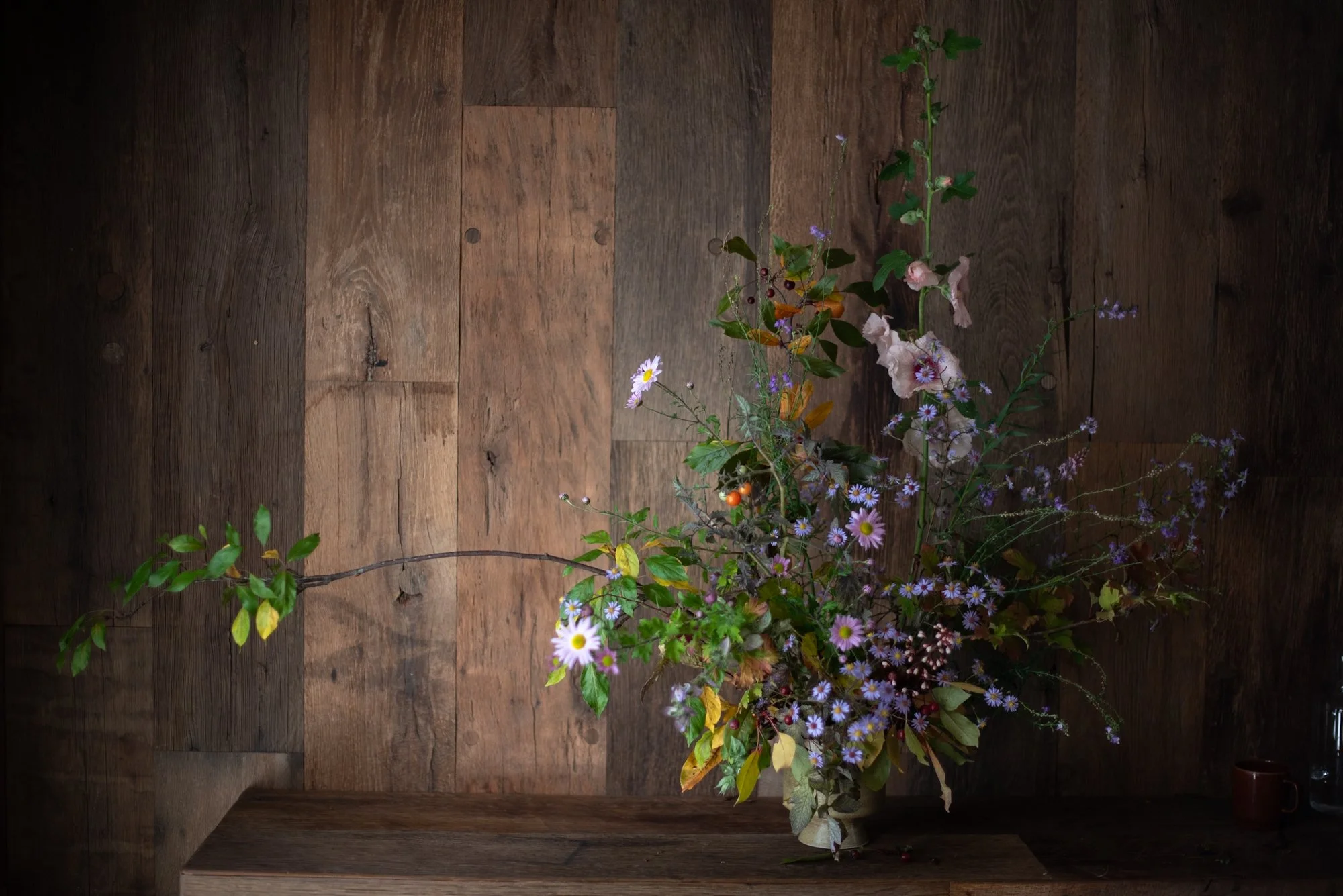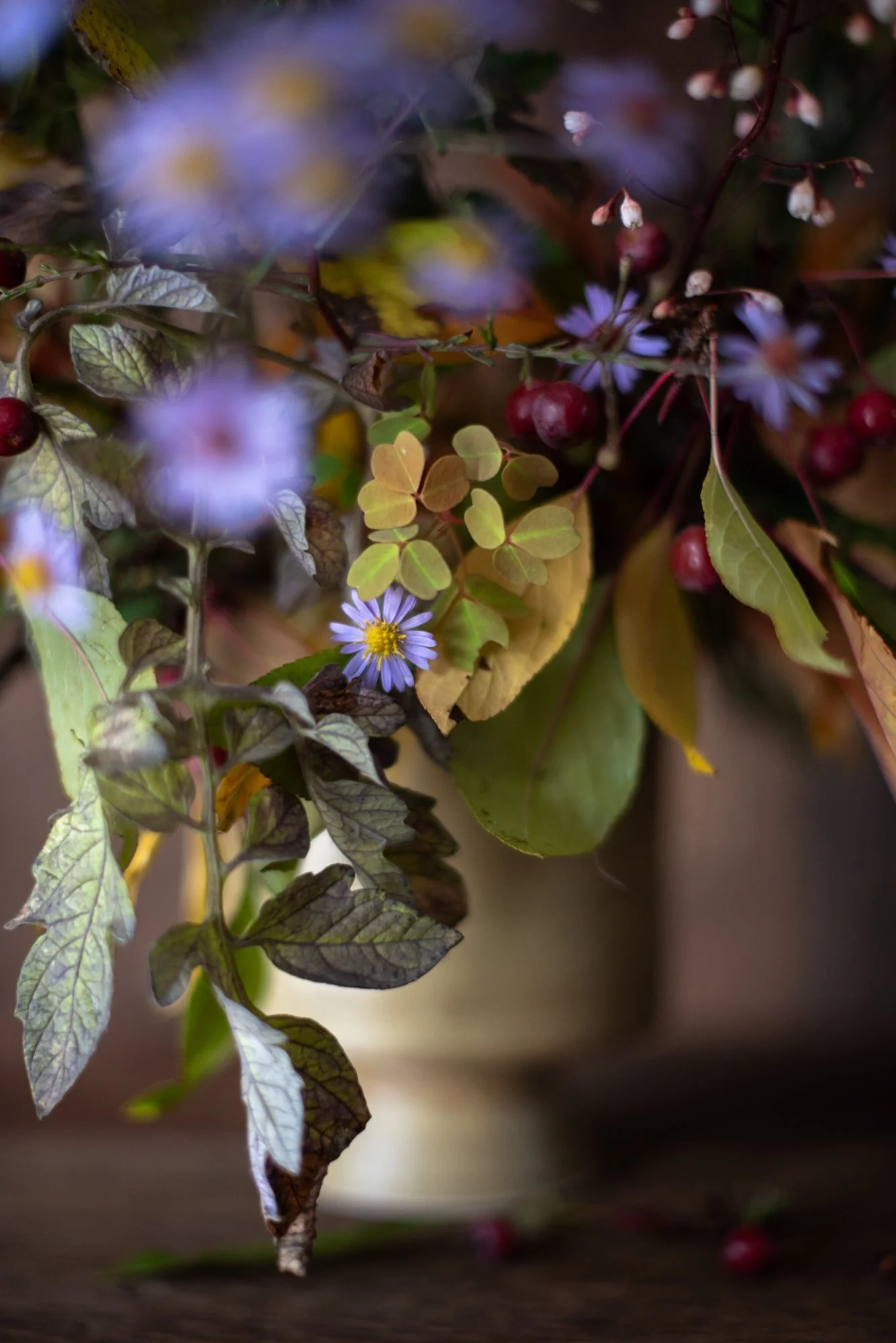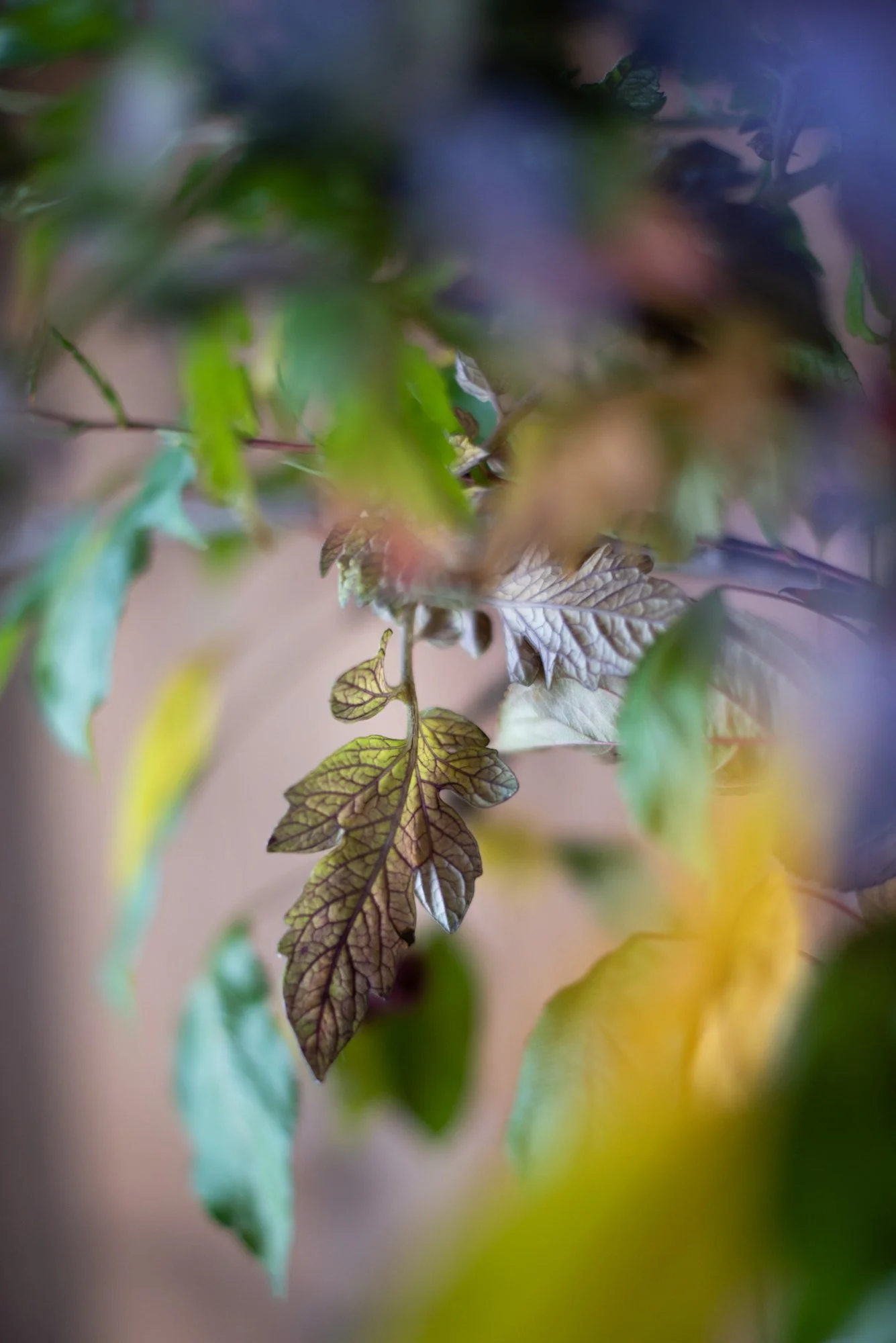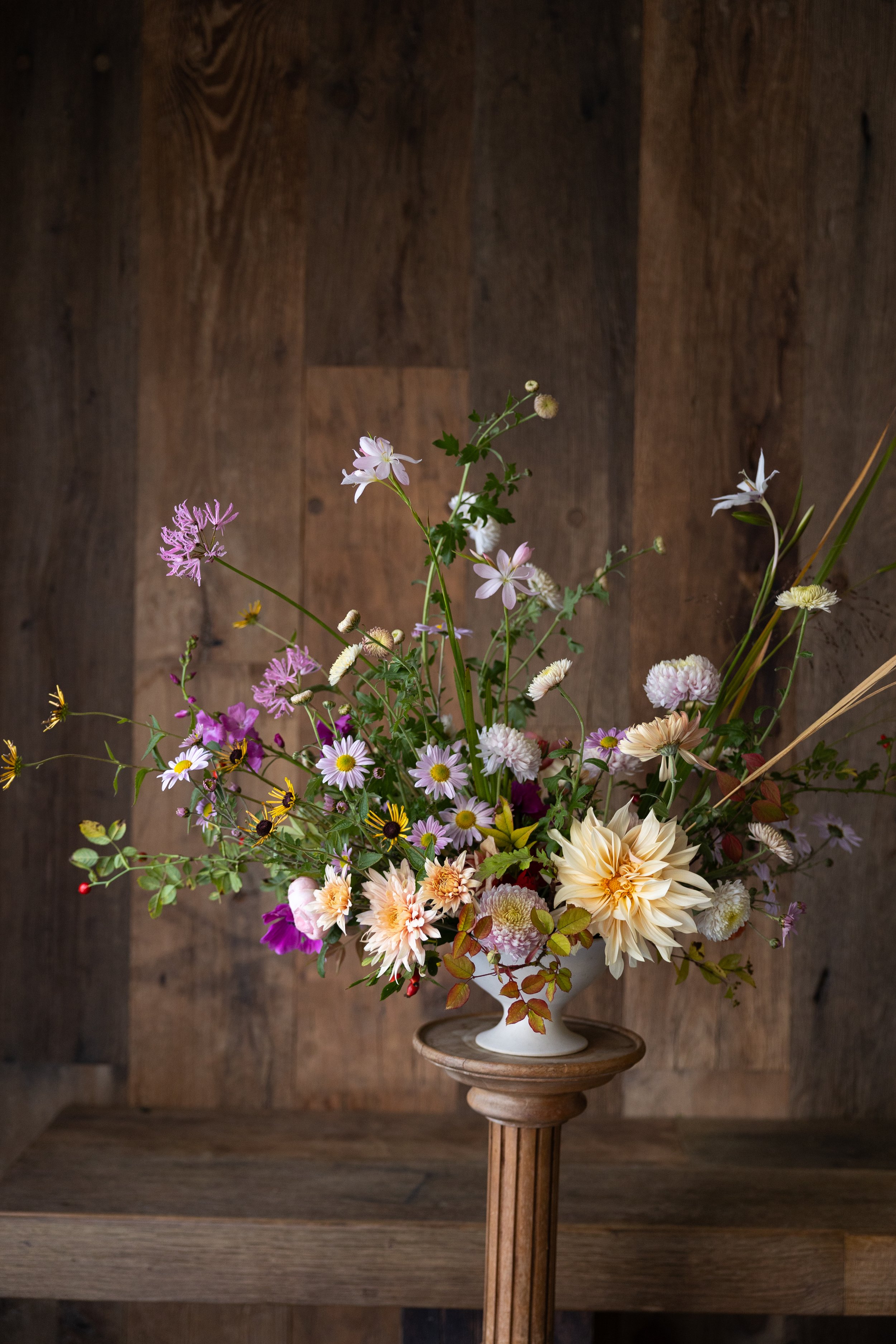ROSEHIP, CHRYSANTHEMUM, ASTER
A dash of lipstick red to cheer the spirits - velvety roses with their gleaming hips layered with the fading orbs of tiny dahlias, fragrant chrysanthemum and daisy-faced asters.
OCTOBER
VaSE
Small tea bowl with oatmeal glaze
Kenzan
Cap of chicken wire
INGREDIENTS
Rosa ‘Hot Chocolate’ (rose)
Rosa ‘Matador’ (rose)
Rosa ‘Desdemona’ (rose)
Rosa ‘Cornelia’ (rose)
Dahlia ‘Lismore Carol’ (dahlia)
Chrysanthemum ‘Ruby Mound’ (chrysanthemum)
Chrysanthemum ‘Avignon Pink’ (chrysanthemum)
Tagetes ‘Burning Embers’ (marigold)
Gaura ‘Siskiyou Pink’ (wandflower)
Potentilla thurberi ‘Monarch’s Velvet’ (cinquefoil)
Symphyotrichum novi belgii ‘Nurstead Charm’ (aster)
Tropaeolum ‘Purple emporer’ (nasturtium)
NOTES
On a chilly autumn day, a warming bowl of sumptuous colour and texture. Dahlias can be challenging to use in small arrangements so I chose the tinest variety we grow (also my favourite) ‘Lismore Carol’. As its the end of the season the flowers have been on the plants a while and so have faded to a beautiful glowing orange-red - much paler than when they’ve newly flowered. To break up the red I introduce a few blue pinks. For texture - a smattering of gold and blush rosehips - so good this year! Nasturtium to finish, which I carefully tuck over the lip of the bowl to allow them to spill toward the tabletop.

